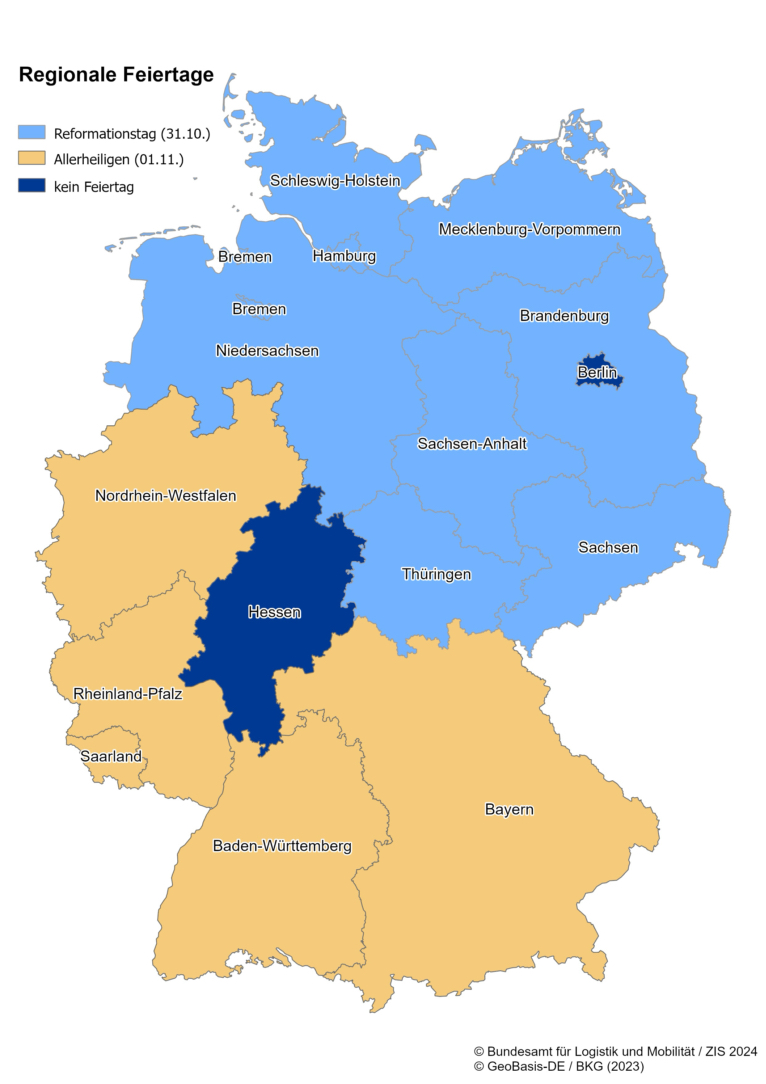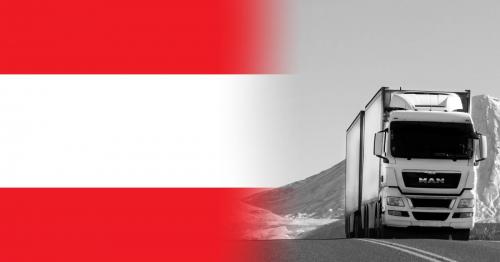Germany: all you need to know about driving bans on 31 October and 1 November

HGV driving bans in Germany on these two days may be rather confusing, which is not surprising given the fact that both holidays are celebrated only in selected federal states, and the hours of the bans vary depending on the region. However, to make life easier for truck drivers, the authorities introduce derogations that allow them to cross the state where the ban is in effect without having to stop for two days.
Basic facts:
❌ Thursday, October 31, Reformation Day is a public holiday in the states of Brandenburg, Bremen, Hamburg, Mecklenburg-Vorpommern, Lower Saxony, Saxony, Saxony-Anhalt, Schleswig-Holstein and Thuringia. The ban is in effect from 00:00 to 10:00 PM, except for Lower Saxony, where it starts from 06:00 and lasts until 10:00 PM.
❌ Friday, November 1, All Saints\' Day is is a public holiday in the states of Baden-Württemberg, Bavaria, North Rhine-Westphalia, Rhineland-Palatinate and Saarland. The ban is in effect from 00:00 to 22:00, except in North Rhine-Westphalia, where it starts from 06:00 and lasts until 10:00 PM.
Exceptions in Lower Saxony and North Rhine-Westphalia
Until 2025, special regulations regarding Reformation Day and All Saints\' Day apply in the states of Lower Saxony and North Rhine-Westphalia. Reformation Day (October 31) is a public holiday in Lower Saxony,, while All Saints\' Day (November 1) is a public holiday in North Rhine-Westphalia.
To make sure that lorry drivers traveling through Lower Saxony and North Rhine-Westphalia are not banned from driving for 2 days in a row, the hours when the ban is in effect have been changed. On both holidays, the ban will last from 6:00 AM to 10:00 PM.
In addition, both federal states allow lorries to use the main transit routes along A 1, A 2, A 30, A 31 and A 33 during a public holiday when the ban is in effect. Listed below are motorway sections where HGV traffic is allowed between 6:00 AM and 10:00 PM on public holidays in Lower Saxony or North Rhine Westphalia:
➡️ A1 - from the Lotte/Osnabrück junction to the border of North Rhine-Westphalia and Lower Saxony near the Osnabrück-Nord junction and in the opposite direction.
➡️ A2 - From the Bad Oeynhausen junction to the border between Lower Saxony and Saxony-Anhalt and in the opposite direction.
➡️ A 30 - from the Bad Bentheim border crossing to the Bad Oeynhausen intersection with the A2 motorway and in the opposite direction.
➡️ A31 - from the Schüttorf motorway junction to the border between Lower Saxony and North Rhine-Westphalia and in the opposite direction.
➡️ A33 - from the Osnabrück-Süd motorway junction to the Dissen-Süd junction and in the opposite direction.
Additional derogation in North Rhine-Westphalia
In contrast to North Rhine-Westphalia, there is no driving ban on All Saints\' Day in the state of Hesse. For practical reasons, drivers travelling through North Rhine-Westphalia via the shortest route between two points in Hesse will not be fined for violating the driving ban on All Saints\' Day. Drivers should use the designated \"transit section\" of the A44 motorway (junction 65), from the state border at kilometre 43.2 to the state border at kilometre 28.4.Transit traffic to and from the state of Berlin on Reformation Day (31.10)
In contrast to the neighbouring state of Brandenburg, there is no driving ban on Reformation Day in the state of Berlin. By virtue of an agreement with the states of Brandenburg, Mecklenburg-Vorpommern, Saxony, Saxony-Anhalt and Thuringia, HGV traffic on 31 October is permitted along A2, A20, A24, A4, A9, A10, A11, A12, A13, A14, A15, A17, A19, A38, A71, A72, A73, A111, A113, A114, A115, A117, A143, provided the place of departure or the place of destination is located in the state of Berlin.Trucks are not allowed to leave the designated motorways in the states where the holiday driving ban is in effect, unless the motorway is completely closed following an accident or owing to road works. In such cases, trucks are allowed to follow designated diversion routes. If no diversion is indicated, drivers should use the shortest route to the nearest motorway junction. A truck is also allowed to leave the motorway in case of a mechanical failure. It should then be towed to the nearest suitable place where it can be safely parked.








